January: Bath then Bed
As well as stocking up on calories at this time of year, birds need to keep their feathers in good condition for the long, often sub-zero winter nights. Down feathers are incredibly efficient heat insulators – those of us old enough to remember eiderdowns can attest to this. These were originally filled with feathers from the arctic sea-going eider duck. The French name for the eider duck is ‘duvet’, so spare a thought for the birds as you snuggle beneath yours on a freezing night.
Bathing is still a daily ritual for feather maintenance when birds can find suitable water, so keeping a section of your pond or garden birdbath ice-free is a big help.
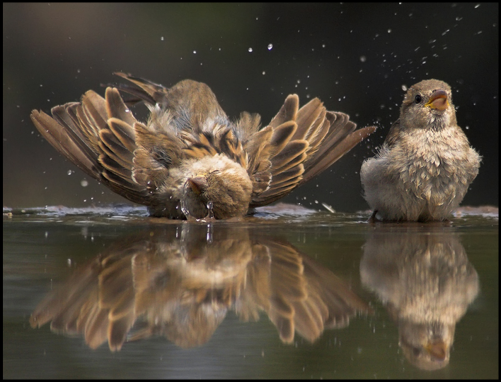
At this time of the year insect-eaters have a hard time and some are forced to turn to other food, like this pied wagtail feeding on raw porridge oats in a Farleigh garden. So do keep the garden bird feeders topped up.
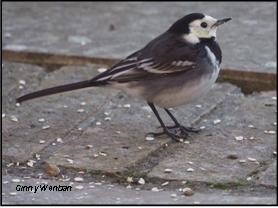
As well as the cold, night-time brings other problems for birds, such as sleeping while keeping an eye open for predators, so some species roost communally. Small birds like wrens will gather together in a cavity to conserve heat. All face inwards with the dominant, usually older male, birds at the centre. As many as sixty-one have been counted entering a nestbox in particularly cold weather. Whole families of long-tailed tits – parents, children, uncles and aunts – will huddle together in a tightly-packed line on a twig for the same purpose.
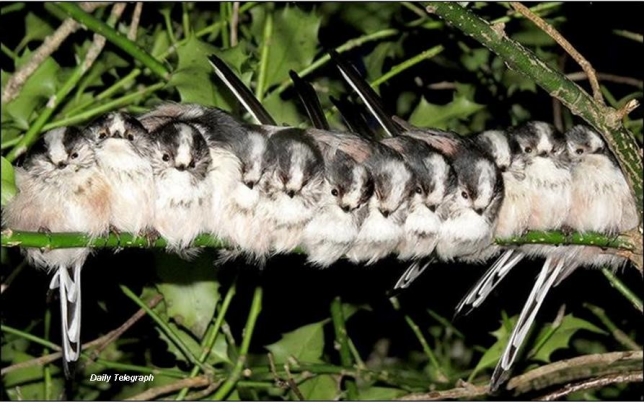
The heat leaking from our buildings and lights makes towns and even motorway service areas an attractive place for some species to spend the night; the extra degree or so of warmth reduces the amount of fat individuals need to burn to stay alive. While roosting together may attract predators after an easy meal, it also provides more eyes to spot them coming – and as usual dominant individuals secure the safest spots in the centre. But it is also thought that flocking helps to pass on information about food sources, by subordinate birds following experienced older individuals to their feeding sites in the morning. Perhaps your well-stocked bird table could be one of them!
Look out in the town as it starts to get dusk. Pied wagtails in particular like the heating outlets on roofs of large buildings (the Odeon in Maidstone is one) and even the trees in town centres can host several hundred birds. Like the ‘lights’ in this tree in the centre of Tunbridge Wells. In the daytime, look for the circle of white droppings on the ground beneath!
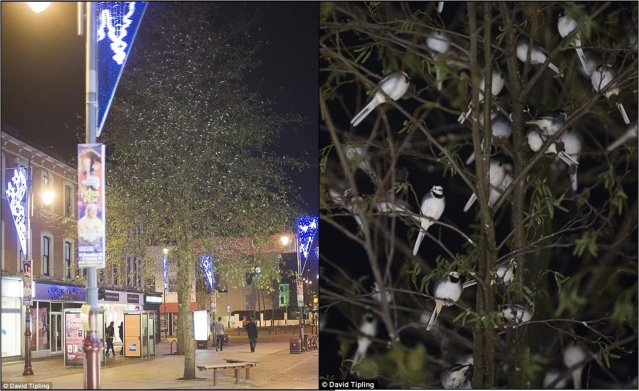
Night-time disturbance can be fatal for small birds as they live on a knife-edge at this time of year; they may only just manage to put on enough fat during the day to see them through the hours of darkness. So, if you celebrate the New Year with fireworks, ensure they are not set off close to thick foliage where birds are likely to be roosting, especially if large bangs are involved.

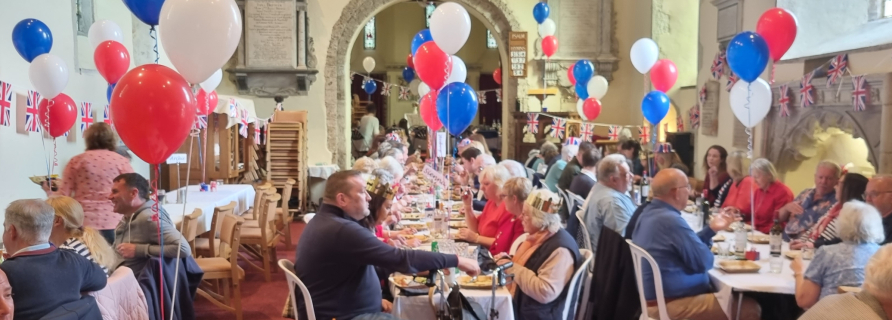





Make A Comment
Comments (0)